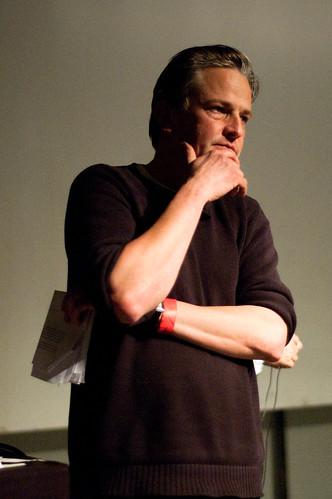Matthew Fuller: Search Engine Alternatives
 The search market is a multi-billion dollar industry and given such potential to capitalize there is a large window of opportunity with a vast range of possibilities for the future of search. The mythology of the search engine is that there is only one type of user and only one end-point for any given search. Matthew Fuller, author of a number of books on art, media and software, dismisses such narrow thinking by welcoming a cast of “alternative search engines” that offer some variety to the classic retrieval model of search.
The search market is a multi-billion dollar industry and given such potential to capitalize there is a large window of opportunity with a vast range of possibilities for the future of search. The mythology of the search engine is that there is only one type of user and only one end-point for any given search. Matthew Fuller, author of a number of books on art, media and software, dismisses such narrow thinking by welcoming a cast of “alternative search engines” that offer some variety to the classic retrieval model of search.
In 1998 at Stanford University, Larry Page and Sergey Brin presented a paper that documented the structure of a “large-scale hypertextual web search engine” called “Google”. Fuller believes that Page and Brins’ paper is the backbone of all web searches and that within their methodology lies the foundation for other possibilities in the field of search. “If we understand the dynamics and conditions of what comprises a search engine, and if we think it through with a biological metaphor (as having an anatomy), then we can understand how search engines are induced to change ,” said Fuller.
Fuller went on to present a handful of alternative search engines that are augmenting search:
Viewzi provides a variety of different views for searching the web. As an example, Viewzi can present data on vector space where the most relevant data appears closer to the user and the least relevant data further away. In addition, it can Viewzi can then make connections between two different search queries, or it can arrange the items on a visual timeline. Fuller added, “Viewzi sets up multiple views and multiple structures that are different than what we are used to, very different from a flat list.”
Oamos is the search engine of saturation, entertainment and chaos. Fuller explained, “Rather than an analysis of discreet, rationally composed information, Oamos is about information as a search experience.”
Kartoo is a network visualization that reveals your search by mapping data within relationship similar data on the network.
There doesn’t only have to be “one slot to put your data”, “one button to press”, and “one way to return results.” What these examples show is a more multi-linear search which is different from the very flat, linear results given by Google. In conclusion, Fuller affirmed, “Designing interfaces that match the potential for the Web’s complexity are underdeveloped, and this will be the challenge for the next wave of search.”
Read more from Chris Castiglione on his technology blog and at One Month.
